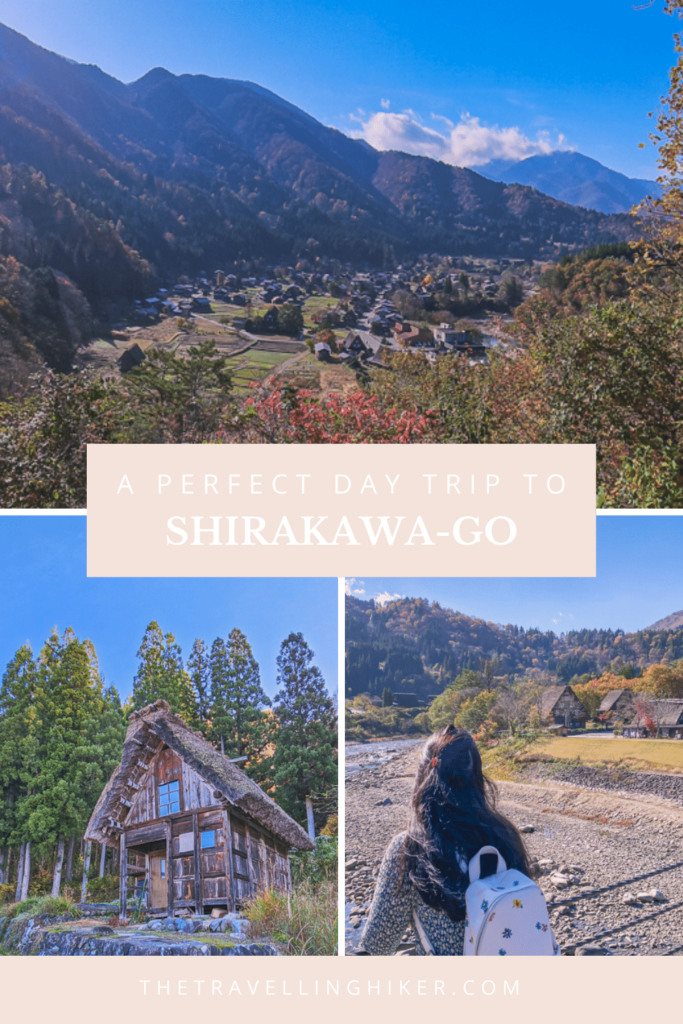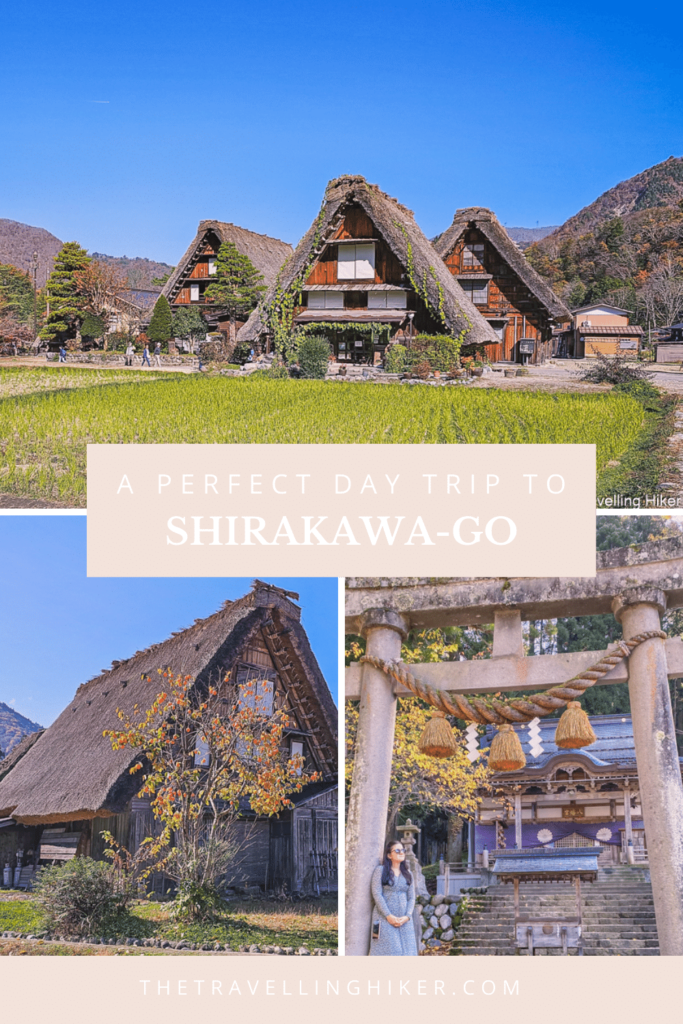Shirakawago is the perfect day trip idea if you find yourself with some extra time in the Japanese Alps. Here, you will see how people used to live in this area of Japan, learn about Japanese culture and traditions, and enjoy the beautiful scenery that the traditional houses create with the mountains as a backdrop. Sounds interesting right? Then, keep reading this post to learn how to go on a beautiful day trip to Shirakawago!
TABLE OF CONTENTS
SHIRAKAWAGO
Shirakawago is a small traditional Japanese village located in the heart of the Japanese Alps, in the Gifu Prefecture. This village was declared a UNESCO World Heritage Site in 1995 thanks to its traditional gassho-zukuri farmhouses.
The gassho-zukuri traditional farmhouses are famous for their steep thatched roofs that are built without any nails. These roofs were so steep to help support the heavy weight of the snow during the winter. The big space under the roofs was used for storage and for cultivating silkworms.
The term gassho-zukuri translates into English as “constructed like hands in prayer”. Tradition thinks that these roofs look like the hands of Buddhist monks in prayer.
Being a protected UNESCO site, the owners of these houses can’t do any construction work on them. This means that you will get to experience the houses as they were back in the Edo period.
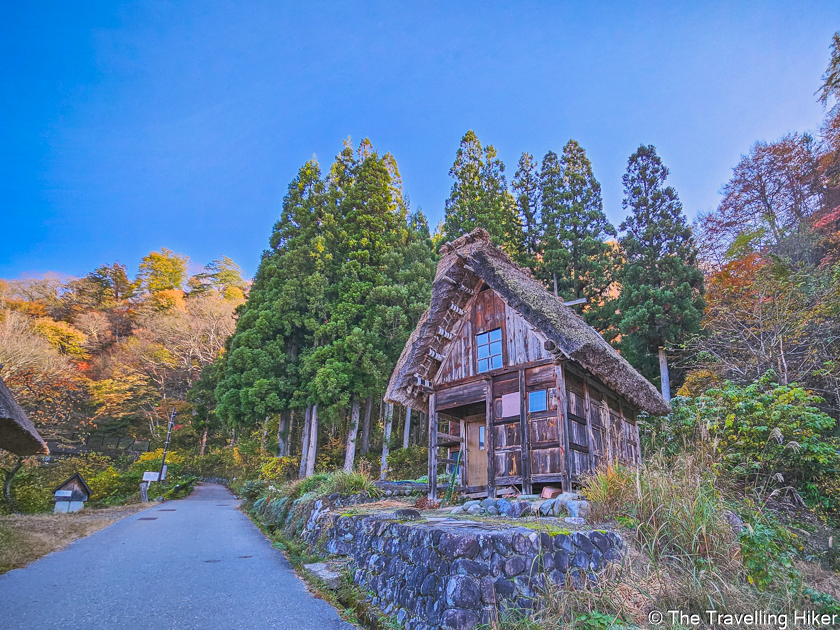
HOW TO GET TO SHIRAKAWAGO
Most people visit Shirakawago from either Takayama or Kanazawa. Many people, visit this small village as an intermediate stop between both cities, so here is how you can reach it from both cities.
Since it is located in the middle of a mountainous region, the only way to reach it with public transport is by bus.
From Takayama
The best way to reach Shirakawago from Takayama is by taking a bus from the company Nohi Bus. Nohi Bus operates buses that go between Takayama – Shirakawago – Kanazawa/Toyama. The frequency of these buses varies depending on the season of the year.
The bus station is located right next to Takayama Train Station and the trip between Takayama and Shirakawago takes approximately 50 minutes.
Timetables and bus fares are available on the Nohi Bus official website.
Important: Since Shirakawago is a popular destination, I recommend you book your bus tickets in advance. You can either do this online here (only one month before your visit) or the day before at the bus station in Takayama. We booked it online and everything went very smoothly.
From Kanazawa
If you’re visiting from Kanazawa, then you have to take the same bus Nohi Bus line but in the other direction. The bus station in Kanazawa is also located next to the Kanazawa train station (West Gate). The trip between Takayama and Shirakawago takes approximately 75 minutes.
Timetables and bus fares are available on the Nohi Bus official website.
Important: Same as from Takayama, I recommend you book your bus tickets in advance. You can either do this online here (only one month before your visit) or the day before at the bus station.
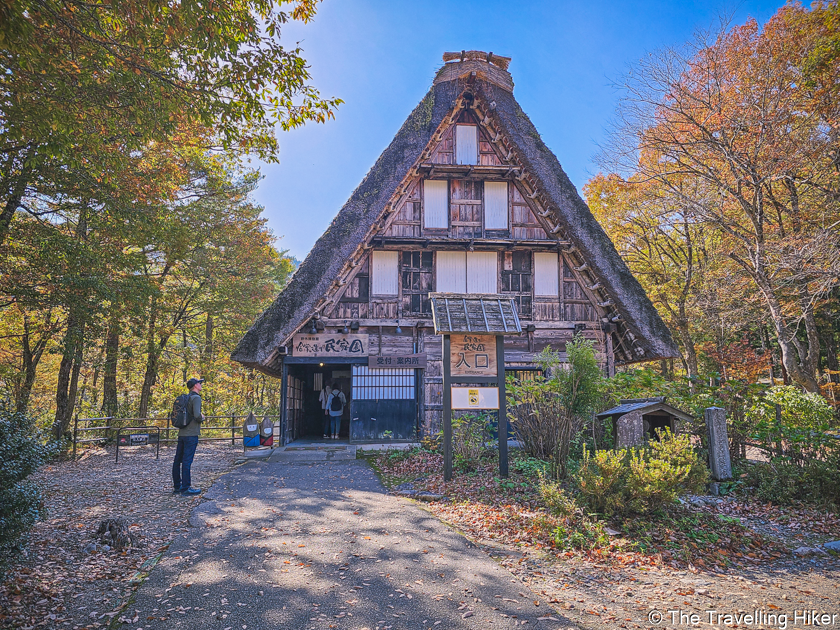
HOW MUCH TIME DO YOU NEED TO VISIT SHIRAKAWAGO?
Shirakawago is a very small village so you don’t need much time to visit it. We visited as a half-day trip (spent 4 hours there) and we had plenty of time to explore without rushing, take plenty of photographs, and even get a few snacks to eat.
A VISIT TO SHIRAKAWAGO
Here’s everything we did during our visit to Shirakawago. In general, the best thing to do in Shirakawago is to wander around the village and stop wherever you like. The village is quite small so no matter which way you go, you will at some point or the other arrive at all the places that I will mention here.
Shiroyama Observation Deck
The first thing we did at Shirakawago was to walk up to the Shiroyama Observation Deck, located where the Ogimachi castle used to be. From here, you will get to enjoy beautiful views of the village with its many traditional houses and mountains as a breathtaking backdrop.
To reach this observation platform you will have to do a short uphill walk of approximately 15 minutes. The walk is not very strenuous so unless you have mobility issues, you will be able to reach it without any issues. Just take it slow and enjoy the view on your way up! There is also a small shuttle bus but the timetables are very limited and it is not very reliable.
The view from Shiroyama was very beautiful. We spent plenty of time admiring it and taking as many photos as we wanted.


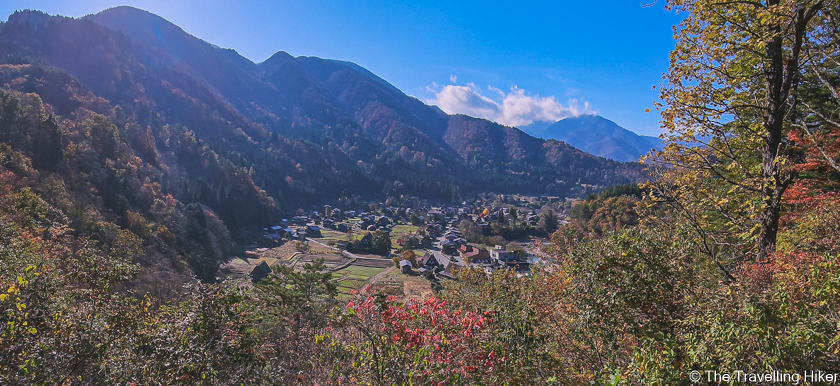
Visit inside the Gassho-Zukuri Farmhouses
Several of the Gassho-Zukuri Farmhouses act as a museum and can be visited inside. The most famous ones are the houses of the Wada family, the Kanda family, and the Nagase family.
- The Wada house is the largest traditional gassho-style house that can be visited in Shirakawago and it reflects the wealthy position of the Wada family who were traders of saltpepper and silk.
- The Kanda house is 160 years old and the residence was used as a brewery.
- The Nagase house has a total of 5 stories and is 250 years old. The Nagase family were originally doctors.
We visited the Wada family house and it was interesting to see how these houses are from the inside. You can also go up to the different floors of the house and learn what they were used for. The only thing we didn’t like about it is that there was a big fire on the ground floor which made the house full of smoke and made the visit a bit uncomfortable.
Practical information: The houses are normally open between 9:00 and 17:00 and it costs 400 yen to enter.
Just remember, not all houses in Shirakawago are open to the public, so please don’t wonder inside every house you see.
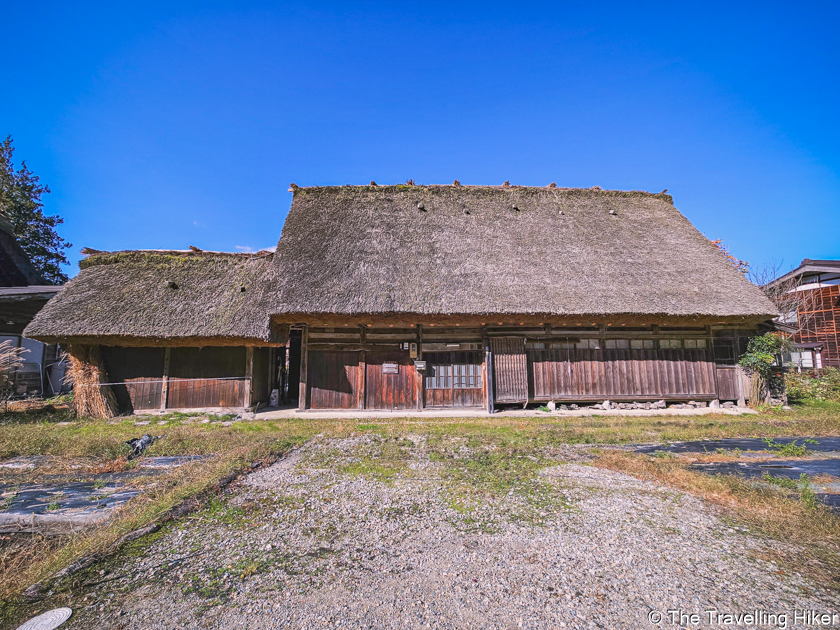
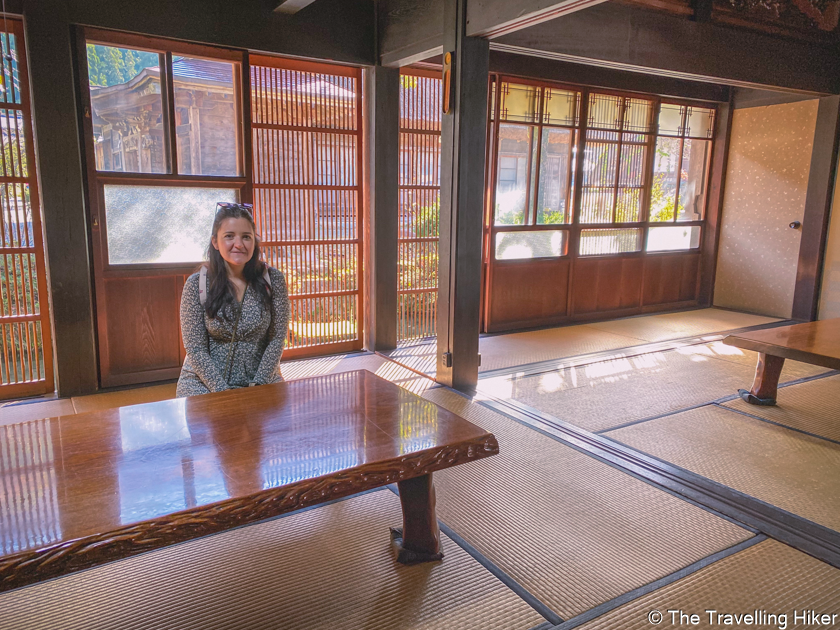
Three Houses of Shirakawago
We continued walking and we arrived at a very cute photo spot with three houses behind a rice field. There were several people here taking photos and we couldn’t help ourselves and joined them.
There is a second spot with three aligned houses that is also perfect for taking photos, approximately 15 minutes walking from the city center. I have pinned them both in the map at the end of this blog.
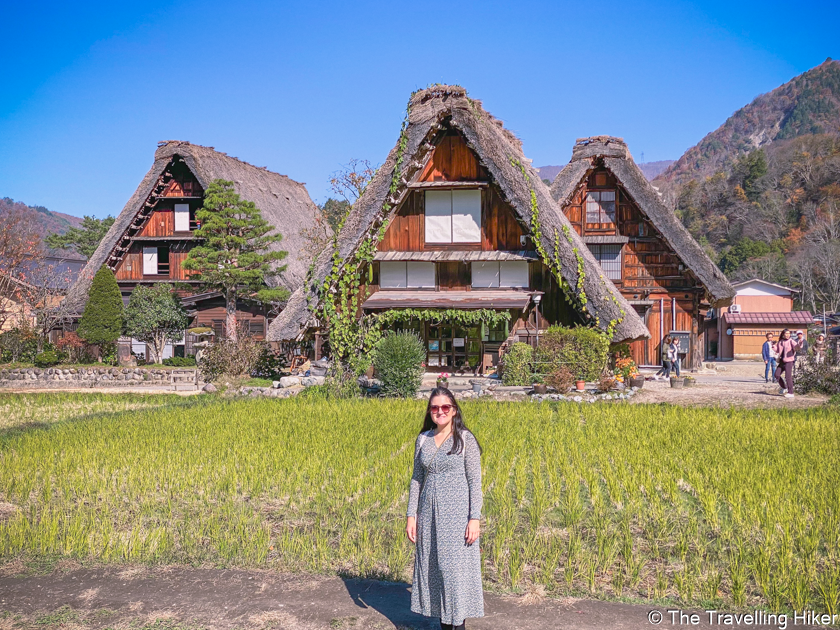
Miozenji Temple
A little bit further, we arrived at Miozenji Temple, which is the biggest temple in the village. The special characteristic of this temple is that it matches the architecture of the village and both the main building and tower bell have the gassho-style roof.
Today the temple serves as a museum that you can visit inside as well. However, the visit is very similar to the other houses that are open to visitors so we just visited the temple from the outside.
Shirakawa Hachimangu Shrine
Right next to Miozenji Temple, we found Shirakawa Hachimangu Shrine which is the definition of peacefulness. The temple was completely empty and was very nice to visit on our own.
The shrine is the largest in the village and our favorite part was the sacred cedar tree that is on its grounds.
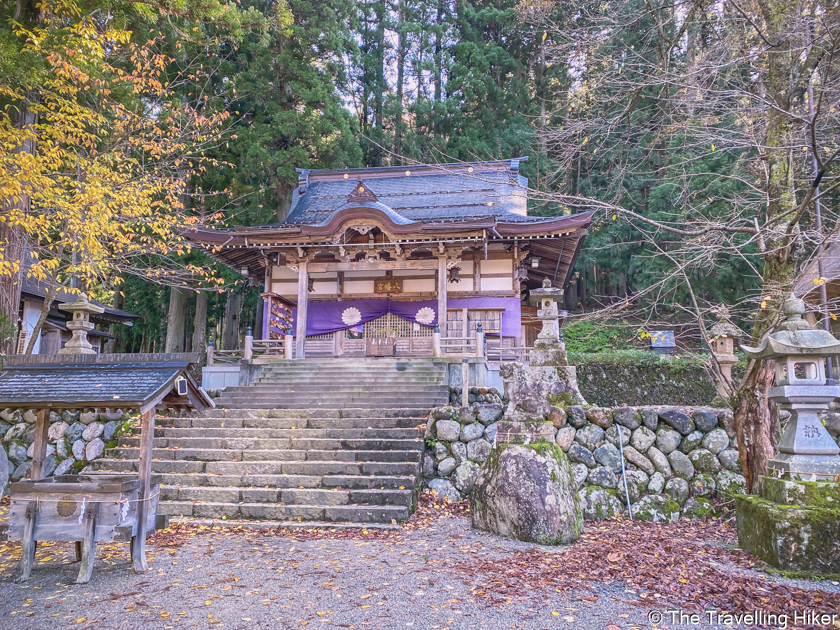
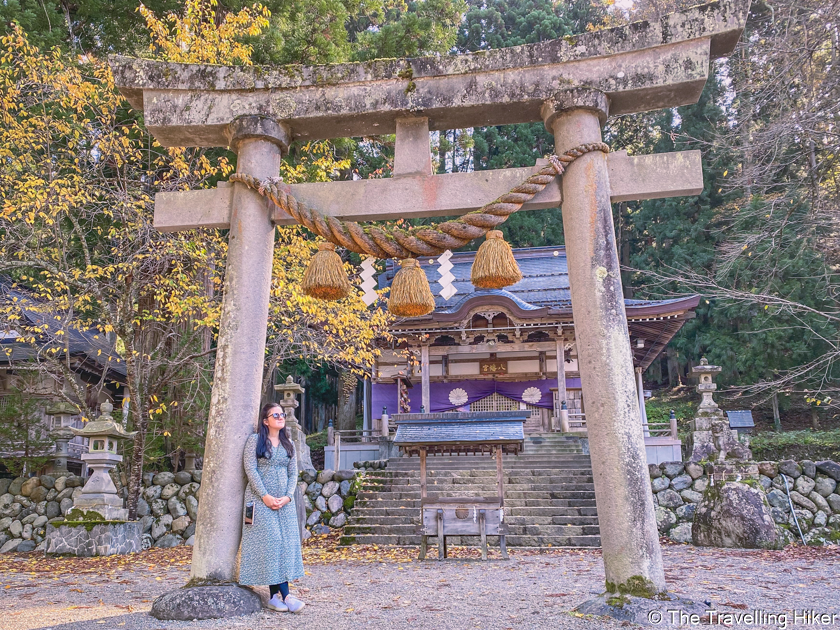
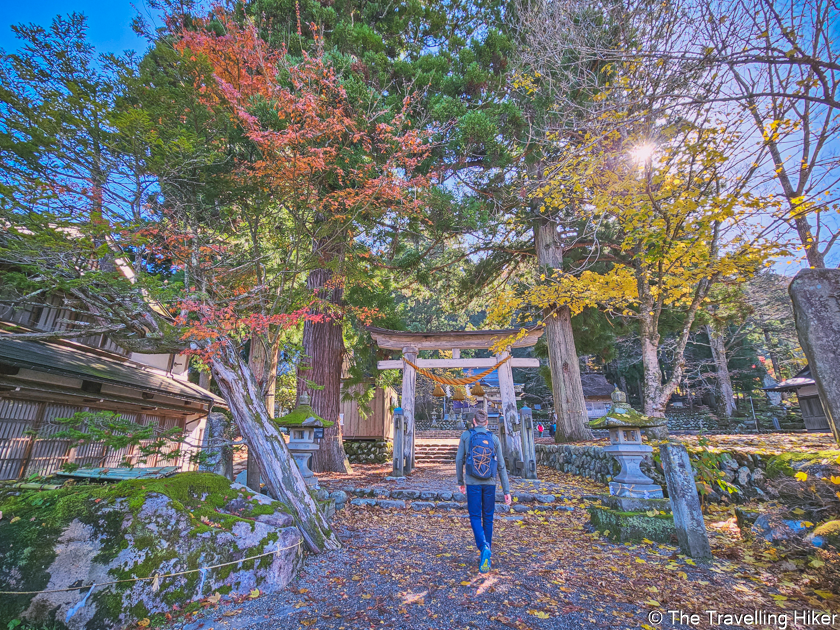
Ogimachi Suspension Bridge
At this point, it was time to cross the Ogimachi Suspension Bridge, which is a 107m long bridge that connects the center of Shirakawago with the west side of the village.
From the bridge and the other side of the Sho River, you will get fantastic views of the village and the mountains that surround it. We spent some time on the side of the river, enjoying the nice weather and relaxing.
On the west side of the bridge, you will find a big parking lot (in case you are coming by car) and the open-air Gassho-zukuri Minkaen museum. We decided to skip the museum due to lack of time but if you decide to enter, you will find approximately 25 traditional houses that recreate how people used to live in the Edo Period.
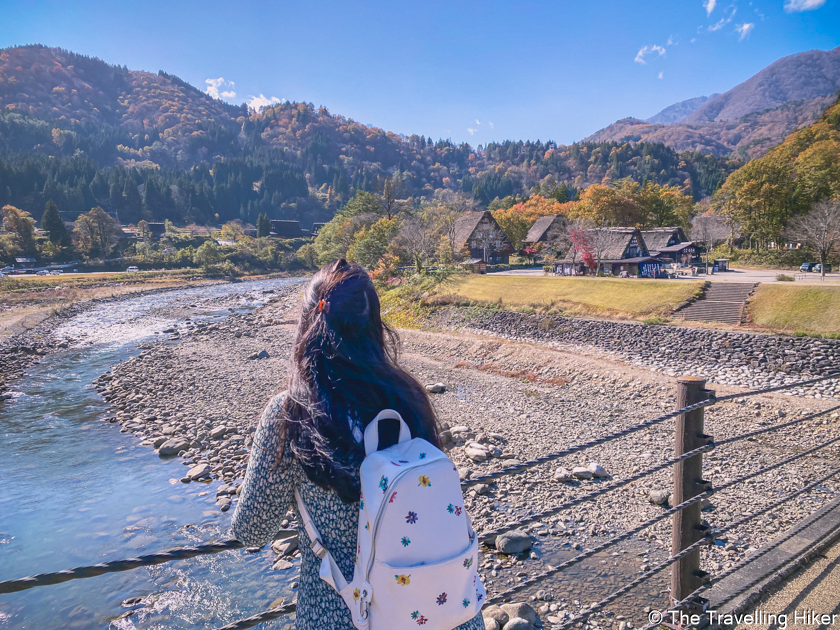
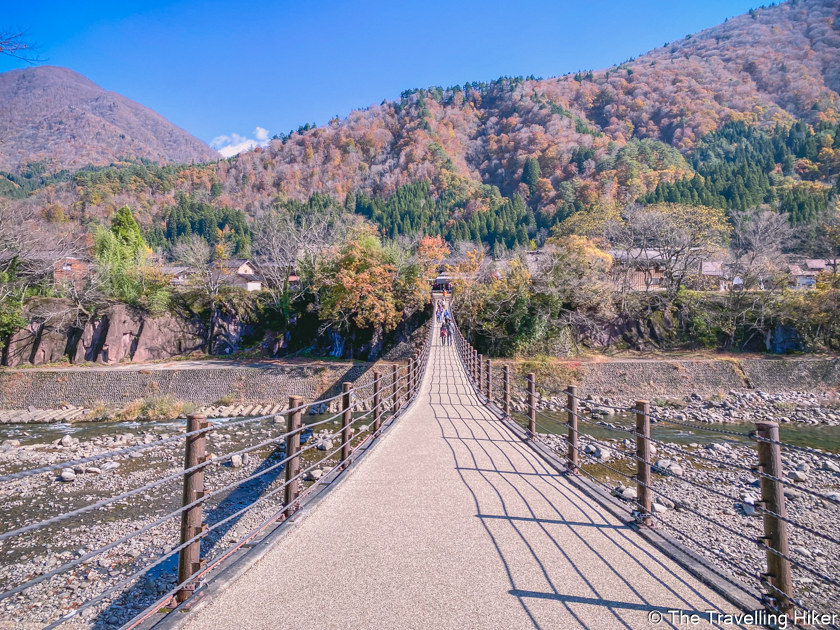
Gassho-Zukurin Minkaen Open Air Museum
On the west side of the bridge, you will find a big parking lot (in case you are coming by car) and the open-air Gassho-zukuri Minkaen museum. This museum has 25 traditional houses that were moved here to avoid them getting destroyed. These houses not only show you how they are constructed and on the inside but also show you the daily life in a village like this.
We decided to skip the museum due to lack of time and because we preferred to spend the rest of our time here exploring the village.
Shirakawago Main Street
We finished our visit to Shirakawago by exploring its main street, where most houses have been turned into souvenir shops and places to eat.
We spent some time checking out the shops and the many souvenirs that were sold there. Most of the things sold there had something to do with gassho-style. There were even some biscuits in the shape of the traditional houses.
We also got some snacks to eat, most of them with Hida-guy (Hida beef) because we couldn’t get enough of it.
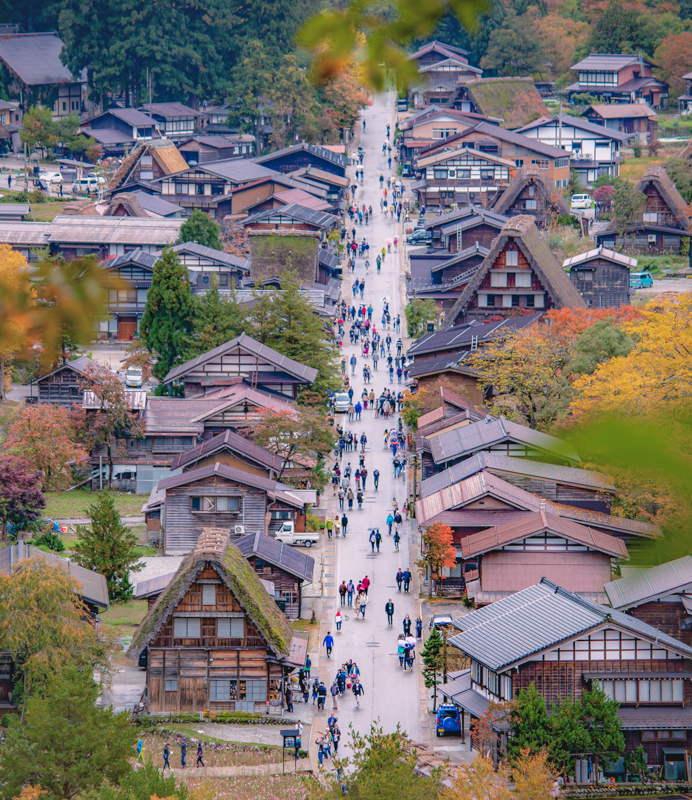
Photo from Tara Vester in Unsplash
EATING AT SHIRAKAWAGO
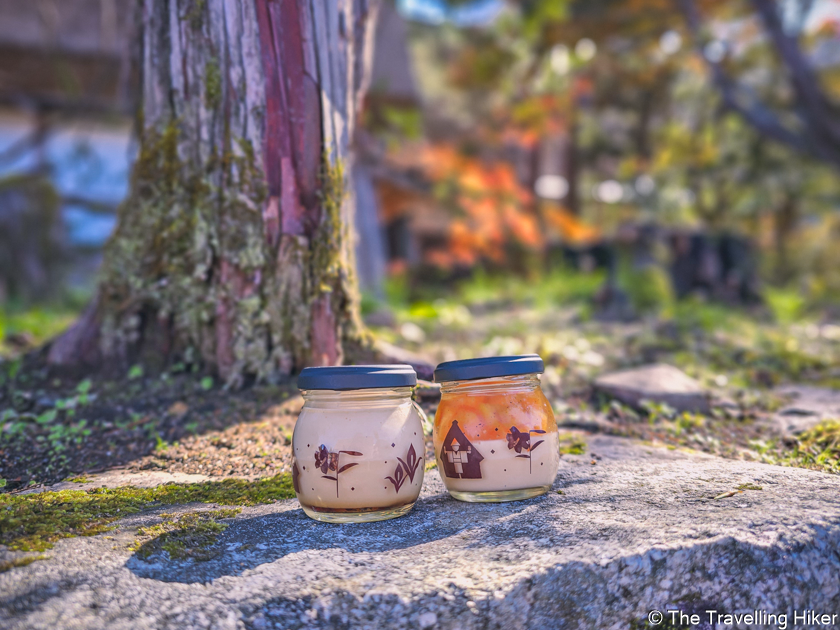
There are several places to eat at Shirakawago, a few of them are places where you can sit inside and eat and the rest are snack places to eat outside.
Since Shirakawago is such a popular place, the prices here are “more expensive” if you compare it with other parts of Japan. I can’t really recommend any of the restaurants because we only tried a few snack stalls but the food was delicious.
The only thing that I can recommend is the Pudding House where we got two delicious puddings.
ACCOMMODATION IN SHIRAKAWAGO
If you have some extra time and want to have the full experience in Shirakawago, then you have to stay overnight in a Minshuku, one of the gassho-zukuri farmhouses.
If you want to do this, you have to make a reservation via the Shirakawa-go Tourist Association. In the map below, I have pinned all the gassho-style houses that act as Minshuku.
Alternatively, you can also stay at a regular guesthouse or ryokan in Shirakawago. You can find them easily in Booking.com.
MAP WITH ALL LOCATIONS
And that’s it for this week’s blog. I hope you liked it and found it useful. Let me know what you think in the comments!
DISCLAIMER: Did you know? This blog uses affiliate partnerships. When you click and book or make a purchase through one of my blog posts, I may receive a small commission (at no extra cost to you). Thank you for supporting The Travelling Hiker!
OTHER ARTICLES ABOUT JAPAN
- PLAN A TRIP TO JAPAN ON YOUR OWN
- THE BEST GUIDE TO TOKYO’S NEIGHBORHOODS
- THINGS TO DO IN ASAKUSA
- THINGS TO DO IN CHIYODA
- BEST THINGS TO DO IN ODAIBA ISLAND
- 3 AMAZING DAY TRIPS FROM TOKYO
- HOW TO SPEND A DAY IN HAKONE: BEST THINGS TO DO
- A DAY TRIP TO NIKKO FROM TOKYO
- A DAY TRIP TO KAMAKURA FROM TOKYO
- THE 11 BEST THINGS TO DO IN TAKAYAMA
- THE PERFECT DAY TRIP TO SHIRAKAWA-GO
- THE ULTIMATE HIROSHIMA TRAVEL GUIDE
- MIYAJIMA ISLAND – THE BEST THINGS TO DO
- A DAY TRIP TO HIMEJI AND KOBE
- 3 DAYS IN KYOTO ITINERARY
- A DAY TRIP TO NARA AND OSAKA
- 4 DAYS IN TOKYO – THE BEST ITINERARY
- THE BEST THINGS TO DO IN SHIBUYA, TOKYO
- THE BEST THINGS TO DO IN MINATO, TOKYO
- THE BEST THINGS TO DO IN SHINJUKU, TOKYO
- 20 DAYS IN JAPAN – ITINERARY FOR FIRST TIME VISITORS
ENJOYED THIS GUIDE? PIN IT FOR LATER!
